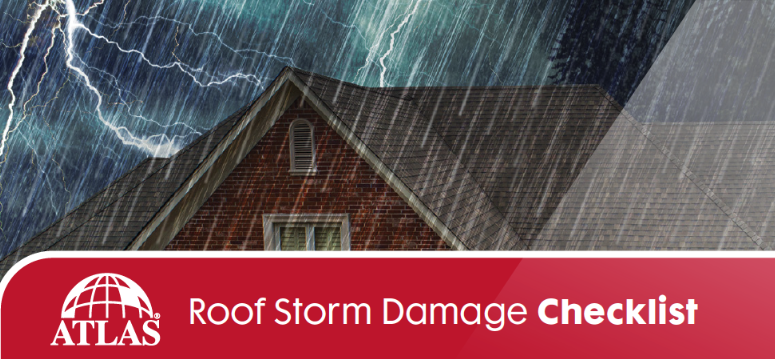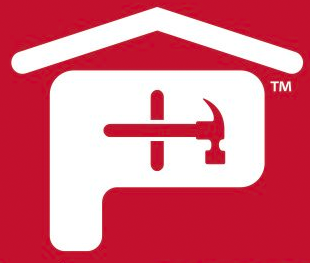

Download Now!
Roof | Gutters, Vents, Windows | Attic & Ceilings | Outside Areas | Call Your Insurance Provider | Hire a Professional | Download Checklist
After a storm rolls through your area, it's always wise to take a look around the exterior of your home to make sure that high winds, rain, hail or other severe weather did not cause any damage to your roof.
Not sure where to start or what to look for? Use our Roof Storm Damage Checklist (below) as a guide.
To download the checklist, click on the image below:
1. Check Your Roof
Being with a visual assessment of your roof. Walk around the perimeter of your home, looking for any visible damage.
Helpful Hint
One of your windows may help give you a better vantage point to some parts of your roof. Make notes and take photos — which will help if you file an insurance claim later — of any damage you see, such as dented, torn, curled or missing shingles.
2. Inspect Your Gutters, Vents and Windows
Check all your gutters, vents, and other roofing accessories and overhangs for dents. Inspect all your windows for cracks, broken glass, loose weather-stripping and even torn screens.
3. Attics and Ceilings Leaks
Watch for leaks and water spots in your attic and ceilings. Even if there's no visible exterior damage to your home after a storm, strong winds and hail can cause unseen damage that may lead to more significant issues later.
Helpful Hint
Make sure you check the inside of the light fixtures, too! If water gets into a light fixture, it can cause a short circuit, which can lead to fire or electrocution. If you suspect that any water has gotten into any light fixture, it's important to turn off the power immediately.
4. Don't Forget Your Outside Areas
Fallen tree limbs, missing fence posts or damaged lawn furniture/other exterior decorations are good indicators that your roof may have also sustained damage from a storm. Check patios and decks for hail damage.
5. Call Your Homeowners Insurance Provider
After you've assessed and documented all the damage, it'll be time to properly file a claim with your provider based on your homeowner's insurance requirements.
6. Hire a Trusted Professional
Roofing and other repair companies are typically swamped after a storm, which means some may offer big discounts or deals to try and compete for your business.
Rule of Thumb
If it sounds too good to be true, it probably is. Do your research before hiring a roofing contractor to ensure they are reputable and trustworthy. Once you've checked for obvious damage, we highly recommend contacting a local roofing contractor, who will have the proper training and gear to safely climb up onto your roof and into your attic for a more thorough inspection.







 PRO LOGIN
PRO LOGIN